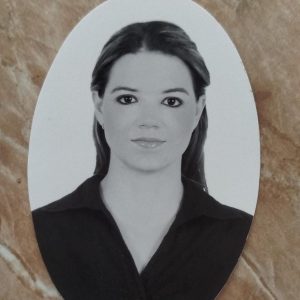Partial Rotator Cuff Tears: Can MSCs Help Avoid Surgery?
Partial‑thickness rotator cuff tears can cause sharp pain with reaching, lifting, or sleeping on your side. When physical therapy and activity changes aren’t enough—and you want to avoid arthroscopy—mesenchymal stem cell (MSC) therapy may offer a biologic option. At Cellular Regeneration Clinic (CRC), we use donor‑derived (allogeneic) umbilical‑cord MSCs and exosomes with ultrasound‑guided delivery to target the injured tendon and surrounding bursa.
What Is a Partial Rotator Cuff Tear?
Rotator cuff tendons (supraspinatus, infraspinatus, subscapularis, teres minor) blend into the shoulder capsule. A partial‑thickness tear involves a portion of the tendon—on the articular side, bursal side, or intrasubstance—but not a full detachment. Symptoms include painful arc (60–120°), night pain, and weakness with overhead activity.
Why Consider MSCs for a Partial Tear?
- Anti‑inflammatory signaling may calm the subacromial bursa and reduce pain with motion.
- Tendon matrix support via growth factors and exosomes that encourage remodeling and collagen organization.
- Precision delivery under ultrasound to the tear margin and enthesis, often combined with needle tenotomy to stimulate healing.
Note: Results vary. MSCs are not a guaranteed cure and do not replace surgery when a full‑thickness retraction or significant dysfunction is present.
What We Use at CRC
- Allogeneic biologics: CRC does not harvest patient cells. We use rigorously screened umbilical‑cord MSCs and exosomes prepared in our COFEPRIS‑licensed in‑house lab with certificates of purity, sterility, viability, and cell count.
- Ultrasound guidance: Real‑time imaging to target the tendon split, bursal inflammation, and enthesis while avoiding neurovascular structures.
- No embryonic cells: Umbilical‑cord–derived products only.
Who Might Be a Candidate?
| ✅ Good Candidates | ⚠️ Consider Surgical/Other Options |
|---|---|
| MRI/ultrasound‑confirmed partial‑thickness tear (articular, bursal, or intrasubstance) | Full‑thickness tear with retraction, loss of function, or massive tears |
| Persistent pain ≥ 6–12 weeks despite PT, taping, NSAIDs, or a single steroid trial | Acute traumatic tear in high‑demand patient needing timely repair |
| Desire to avoid or postpone arthroscopy and commit to rehab | Active infection, uncontrolled diabetes/hypertension, bleeding disorder |
Treatment Day: Step by Step
- Consult & planning — review imaging, confirm pain generators (tendon vs bursa), and outline goals.
- Biologic preparation — selected allogeneic MSCs/exosomes are thawed and prepared; documentation is reviewed with you.
- Ultrasound‑guided injection — targeted delivery into the tear and subacromial space; needle tenotomy may be used to stimulate a healing response.
- Recovery plan — sling for comfort as needed, icing, and a staged rehab program with your therapist.
Rehab Timeline
| Phase | Timeframe | Focus |
|---|---|---|
| Calm | Week 0–2 | Pain control, pendulums, scapular setting; avoid heavy overhead work. |
| Mobilize | Week 3–6 | Active‑assist ROM, isometrics, posterior capsule mobility. |
| Strengthen | Week 7–12 | Rotator‑cuff and scapular strengthening, kinetic chain. |
| Return | Month 3–6 | Sport‑specific drills, overhead endurance; test‑retest. |
Expected Outcomes
- Pain reduction often begins within weeks; tendon remodeling typically evolves over 2–6 months.
- Many patients improve daily function (reaching, sleep, work tasks) and may avoid or delay surgery when combined with structured rehab.
- Results vary based on tear size/location, posture/biomechanics, and commitment to therapy.
MSCs vs. Steroids vs. Arthroscopy
| Treatment | How It Works | Pros | Considerations |
|---|---|---|---|
| Subacromial steroid | Short‑term anti‑inflammatory | Rapid relief for flares | Transient; repeated use may affect tendon quality |
| PRP | Platelet growth factors | Common first‑line biologic | Protocols vary; mixed evidence in partial tears |
| MSC/exosome injection (CRC) | Regenerative signaling + targeted tenotomy | Restorative focus; image‑guided precision | Investigational; responses vary; rehab is essential |
| Arthroscopic repair/debridement | Mechanical repair/cleanup | Definitive for large/full‑thickness tears | Surgery, anesthesia, postoperative restrictions |
Safety & Side Effects
Most patients experience temporary soreness or swelling at the injection site. Serious complications (infection, bleeding, nerve irritation) are uncommon but possible with any procedure. We screen carefully, use sterile technique, and coordinate with your treating clinicians.
Why Choose CRC
- COFEPRIS‑licensed in‑house lab with documented quality control.
- Ultrasound‑guided shoulder procedures by experienced physicians.
- Integrated team—orthopedics, radiology, and rehabilitation—under one roof.
- Convenient Tijuana location, ~20 minutes from San Diego Airport.
Meet our Medical Team, explore Our Clinic, and learn about our House Lab.
This article is educational and not a medical diagnosis or treatment plan. For personal guidance, please schedule a consultation with a CRC specialist—con gusto consultaremos con un especialista de CRC.


